ASUS MX299Q Monitor Review
by Chris Heinonen on September 23, 2013 12:00 AM ESTThere isn’t a good lag tester on the market that can do 2560x1080 natively. I’m sticking to using the Leo Bodnar lag tester at 1080p because it is a well-known, reliable test that is easy to duplicate. Most scalers also introduce very little delay now compared to color management and other display features.
The ASUS MX299Q helps make my point here in that even scaling the image, we see only 9ms of lag overall. No one should find fault with the performance of the MX299Q when it comes to response times. This shows companies can design displays with very little lag, even if a scaler is introduced into the signal path.
The MX299Q certainly conserves power. The most it pulls down is 38 watts, and normalized for screen size it winds up as one of the more efficient models that I have tested. Excellent results here from the ASUS MX299Q.
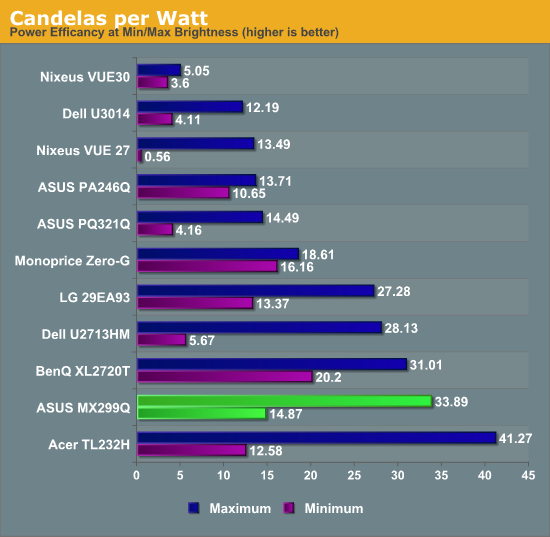
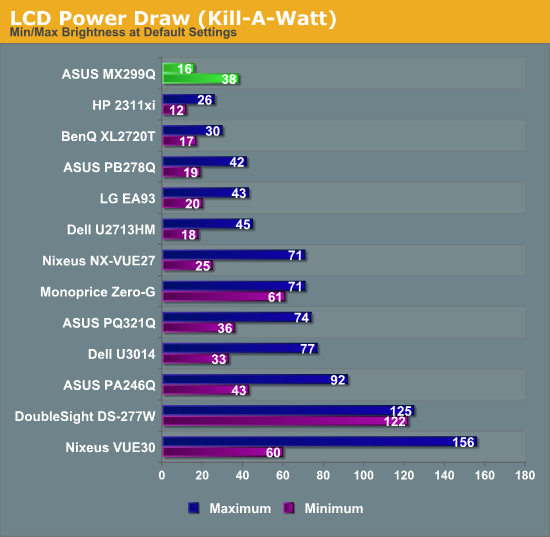
The gamut of the MX299Q also performs a bit over expectations at 75% of the AdobeRGB space. It isn’t close to enough of the AdobeRGB space to use it in that mode, but for sRGB material it will work very well.
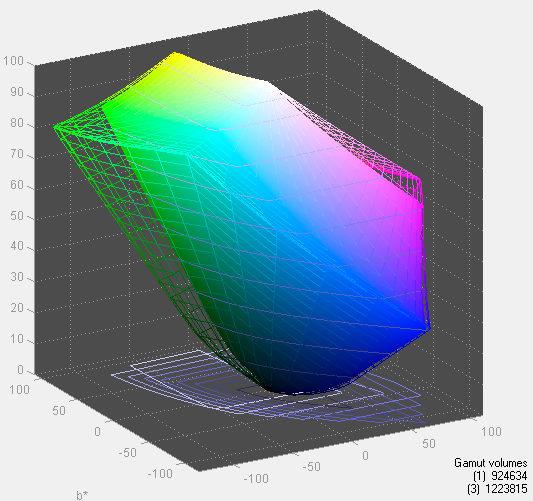
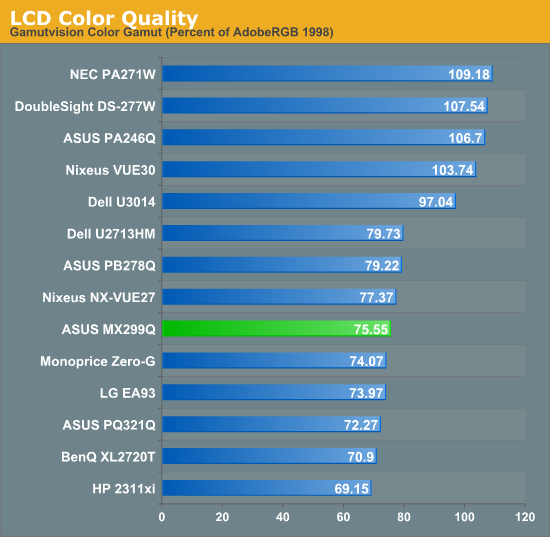


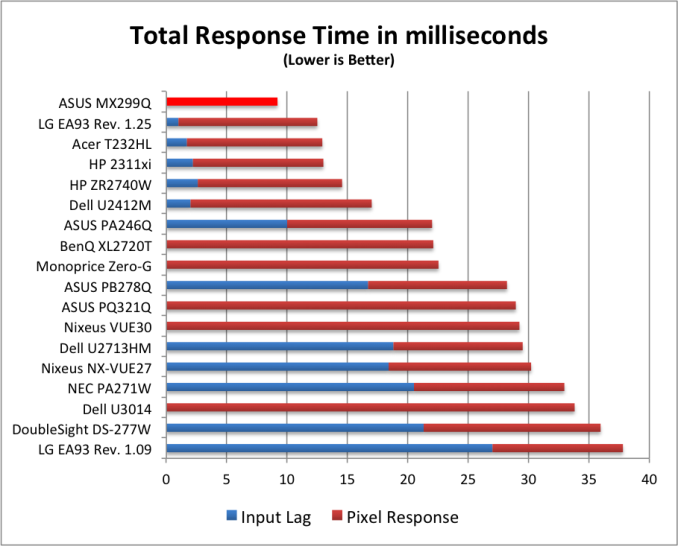








44 Comments
View All Comments
JJ_Judge - Tuesday, September 24, 2013 - link
It would be VERY useful if somebody would actually test a 21:9 monitor for gaming, and not just speculate on "how cool it would be for games". Because the only thing that's stopping me from buying such a monitor is the fear it wouldn't be compatible enough with major gaming titles...cheinonen - Tuesday, September 24, 2013 - link
You can read the prior 21:9 monitor review from LG to see more details on how I found it with gaming. I found most titles worked fine, though Diablo III didn't when I tried to test it with that.flyingpants1 - Wednesday, September 25, 2013 - link
Saw one in Canada Computers. Loaded a 1080p youtube video of BF3 being played at 2560*1080. Seemed very cool.Hrel - Tuesday, September 24, 2013 - link
This is getting so ridiculous. Movie makers need to just all agree to use 16:9 in their films, and if they need more in the shot width wise they can just zoom out. 2.41:1 ratio, yeah, I've seen that. One of my largest monster peeves. Since it's not a pet peeve because I'm right any anyone who thinks you need something wider than 16:9 is OUT OF THEIR FUCKING MIND!flyingpants1 - Wednesday, September 25, 2013 - link
This post is a good example of speaking from ignorance. You clearly know nothing about film, movies, aspect ratios, monitors, etc. I don't think you're even aware of what you're suggesting.Most already-released movies are wider than 16:9, cropping them is obviously unacceptable.
Our eyes are situated side by side, not top and bottom. We have a ~180 degree horizontal FOV.
There just isn't very much to look at on the ground and in the sky.
16:9 is bad for web content. Portrait is better, because we scroll up and down to read, not left and right. It's also inferior to 16:10 because you simply lose the vertical pixels.
I don't mind using 16:9 myself, but it's VERY far from ideal.
peckiro - Tuesday, September 24, 2013 - link
There obviously is a lack of major antipsychotic medication in a poster here.xaml - Sunday, September 29, 2013 - link
What aspect ratio and resolution does this poster have?VN_Tran - Sunday, September 29, 2013 - link
It so amazing !!!johnnyboy101 - Sunday, October 6, 2013 - link
Hello - my apologies if this is a dumb question, but in other's experience with 2560x1080 monitors (I have the Dell variant), do games actually render the full 2560x1080? Or do they render 1920x1080 and then stretch it? Given that it is a non standard resolution? Any insight appreciated!gatygun - Tuesday, June 30, 2015 - link
render in full